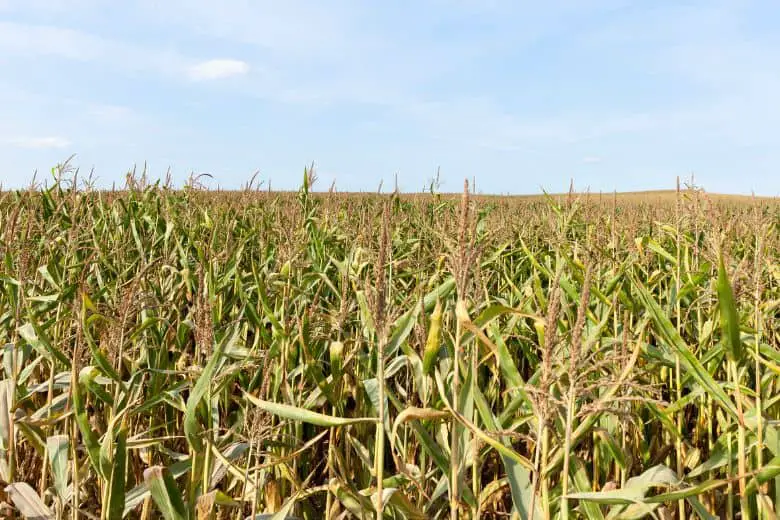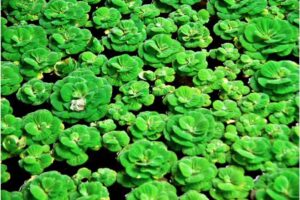
If your corn plants are turning yellow, there may be a few different causes. It could be due to a nutrient deficiency, such as a lack of nitrogen, or it could be caused by a fungal infection, such as powdery mildew. Other factors that can cause yellowing of corn plants include too much or too little water, extreme temperatures, and insect infestations.
It is important to identify the cause of the yellowing in order to take the appropriate action to help your corn plants return to their normal healthy state.
Signs of Nutrient Deficiency in Corn Plants
Nutrient deficiency in corn plants can manifest in a variety of ways, making it difficult to diagnose without a keen eye. Common signs of nutrient deficiency in corn plants include stunted growth, pale or yellow leaves, and wilting. Stunted growth can be a result of the plant not getting enough nitrogen, potassium, or phosphorus.
Pale or yellow leaves can be an indication of a zinc, iron, or magnesium deficiency. Wilting can be caused by a lack of water or a calcium deficiency. Nutrient deficiencies can also lead to reduced yields and poor quality produce.
Knowing the symptoms and signs of nutrient deficiency in corn plants is key to helping farmers identify and address these issues early on, ensuring their crops remain healthy and productive.
Soil pH and Nutrient Availability
Soil pH plays a major role in nutrient availability. It determines which nutrients are available to plants, and in what form. Plants require a range of nutrients, and the availability of these nutrients is affected by the pH of the soil. When the pH of the soil is too high or too low, certain essential nutrients become less available to plants.
By understanding the importance of soil pH and nutrient availability, gardeners and farmers can ensure their plants are receiving the proper nutrition.
How to Diagnose Nutrient Deficiencies in Corn Plants
It’s important to know how to diagnose nutrient deficiencies in corn plants so you can provide the correct nutrition for maximum growth and yield. In this blog post, we’ll review the common signs of nutrient deficiency in corn plants, including yellowing of the leaves, stunted growth, and nutrient-specific symptoms. We’ll also cover the best methods for diagnosing deficiencies, from soil tests to tissue tests.
Finally, we’ll discuss the appropriate corrective measures, such as adding fertilizer or compost to your soil. With this information, you’ll be able to diagnose and treat nutrient deficiencies in your corn plants, so you can continue to see bountiful harvests.
Common Causes of Yellowing Leaves in Corn Plants
Corn plants are an iconic and hardy species of plant, but they are not immune to problems. One common issue that may affect your corn plants is yellowing of the leaves. This can be caused by a number of factors, such as too much water, too little water, extreme temperatures, nutrient deficiencies, or pest infestations.
To make sure your corn plants stay in top condition, it is important to identify the cause of yellowing leaves and take corrective action. If it is due to too much or too little water, adjust your watering schedule.
If it is due to temperature, adjust the temperature of the environment in which the plants are located. If it is due to a nutrient deficiency, provide the necessary nutrients to the soil.
Finally, if it is due to a pest infestation, take appropriate measures to ensure the pests are controlled. With the right care, your corn plants will stay healthy and happy.

Treatment Strategies for Nutrient Deficiencies in Corn Plants
Nutrient deficiencies in corn plants can be a major concern for farmers, leading to reduced yields and decreased plant health. Fortunately, there are a number of treatment strategies that can be used to help improve soil fertility and optimize nutrient uptake.
These strategies include using soil amendments such as compost, manure, and fertilizers; changing planting practices to reduce nutrient leaching; utilizing crop rotation to reduce nutrient competition; and employing biological control measures to reduce pest infestations.
By understanding the causes of nutrient deficiencies and implementing the right strategies, farmers can drastically improve the health and productivity of their corn plants.
Prevention Strategies for Yellow Leaves in Corn Plants
Yellow leaves in corn plants can be an indication of nutrient deficiency or other environmental stress. To prevent yellow leaves, it is important to ensure the corn plants receive the right nutrients, such as nitrogen, phosphorous, and potassium.
Furthermore, monitoring the soil moisture and adjusting irrigation to avoid over or under-watering can help prevent yellow leaves. To protect the corn plants from environmental stress, using shade cloths during sunny days and providing adequate air circulation around the plants can help.
Additionally, fertilizing the plants during the growing season with a balanced fertilizer and avoiding over-fertilization can help prevent yellow leaves. By following these prevention strategies, the health of the corn plants can be maintained and yellow leaves can be prevented.
Comparing Different Fertilizers for Corn Plants
Comparing different fertilizers for corn plants is an important part of the gardening process. Fertilizers provide essential nutrients for the plant, allowing it to grow to its full potential. Different fertilizers may vary in their composition and cost, but all can be effective when used correctly.
When comparing fertilizers, it’s important to consider the nutrient content, application rate, and cost. Taking the time to compare different fertilizers can result in a healthy, vibrant corn crop.
A Summary of Why Corn Plants Turn Yellow
Corn plants turn yellow when they lack a key nutrient – nitrogen. Without enough nitrogen, corn plants can’t use light energy to produce food, and they turn yellow. It’s important to keep your corn plants well-fertilized in order to ensure they get the nutrients they need and stay healthy and green. Over-fertilization, however, can cause your corn plants to turn yellow too.
Too much nitrogen can lead to an excess of plant growth which can cause the plant to suffer from a lack of water and nutrients. Knowing when to fertilize your corn is key to keeping your plants healthy and green.
Conclusion
In conclusion, the yellowing of corn plants can be caused by a variety of factors, ranging from environmental conditions to nutrient deficiencies. If the plants are turning yellow, it is important to identify the root cause in order to take the necessary steps to ensure the health and growth of the plants. If the cause of yellowing cannot be determined, it is recommended to consult a professional for further assistance.








4 Comments